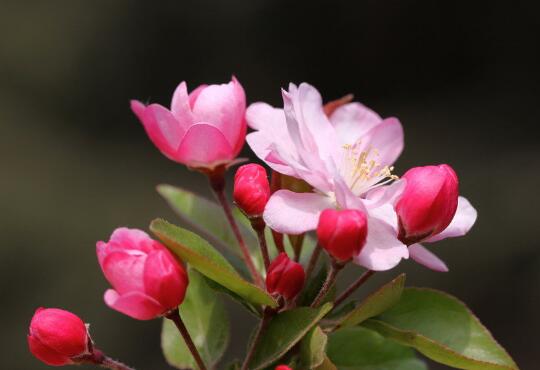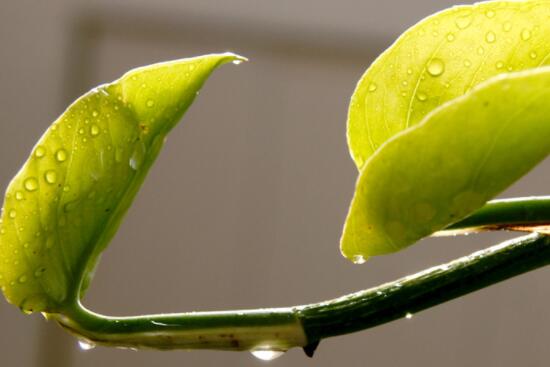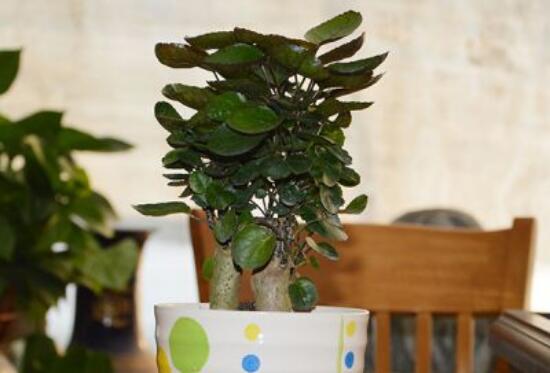How to raise begonia in Xifu, the culture methods and matters needing attention / sufficient light of Begonia
Western begonia is a common ornamental tree species, which can be seen in many parts of our country, but it is not easy to raise it well. There are many places that need to be paid attention to. How to raise it? What are the breeding methods and matters needing attention of Xifu Begonia? Next, the editor will take you to learn about it.
First, how to raise crabapple in Xifu and understand its habits

If we want to know how to raise West House Begonia, we must first understand its growth habits, this plant likes light, so we should keep it in sufficient light when breeding, so it can grow better, and in addition to light, daily water and fertilizer management is also a point that we need to pay attention to, details are described in detail below, let's take a look.
Second, the culture methods and matters needing attention of Begonia sinensis.
1. Humus soil
Before we breed Xifu Begonia, we first need to choose soil, which is a good foundation, which is very important. Generally, it is best to choose loose and fertile humus soil, which is rich in nutrition, drainage and air permeability, which can make plants better absorb nutrients and are not prone to stagnant water.
two。 Fertilization, once every 10 days during the growing period
Fertilizer is one of the main nutrients in the growth process of western begonia, especially after entering the growth period, its demand for fertilizer is very high, basically every 10 days we need to apply fertilizer, so that the plant can grow better. However, there is one thing we should pay attention to before fertilizing, that is, the fertilizer must be diluted before it is released, because it is easy to burn the plant if the concentration is too high.
3. Moisture, avoid stagnant water
The growth process of plants is inseparable from water. When we breed Xifu crabapple, we should frequently water the soil to maintain a certain degree of moisture, so that the plant can grow more healthily. However, we should pay attention to control the amount of water, can not be watered too much, do not remember not to accumulate water, because this plant is not resistant to waterlogging, if stagnant water can easily lead to root rot.
4. Light, summer shade
West House crabapple this plant likes light, but can not bear strong light, if it is in spring and autumn, because the light is relatively mild, we can keep it outdoors to receive light throughout the day, but after entering the summer, because the light is relatively strong, we still have to properly shade, especially when the light is strongest at noon every day, it is best to move it to indoor semi-shade to culture, so as to prevent the plant from being burned by strong light.
5. Timely treatment of diseases and insect pests
In the process of cultivating Western Begonia, the last thing we want to encounter is diseases and insect pests, and this kind of problem is very harmful to the plant, so we must deal with it in time when we find it, because the longer the time drags on, the greater the harm to the plant. for specific treatment methods, you can refer to the article on pest control of Western begonia, in which there is detailed teaching.
Culture methods and matters needing attention of Begonia in Xifu
Culture methods and matters needing attention of Begonia in Xifu
The culture method of Xifu crabapple is very simple, as long as it grows in accordance with its environment.
Light and temperature
The environment in which begonia grows requires adequate light and proper temperature.
Placing Xifu crabapple in an environment with good ventilation and scattered light will help it absorb sunlight and promote its growth.
The suitable temperature for the growth of Xifu crabapple is about 20 degrees, just keep it balanced.
Note:
Don't shine directly on the bright light, so as not to damage the leaves.
Winter should be placed in the sunny shelter for maintenance, summer dry and hot season should pay attention to ventilation shade, can not always shine on the sun.
Watering and fertilization
The watering method of Xifu begonia is to keep the basin soil moist for the best condition. High air humidity is conducive to growth, so it is necessary to properly spray water on the leaf surface and the surrounding ground to moisturize.
Xifu Begonia is fertilized during the growth period, and thin cake fertilizer and water fertilizer is applied about every 10 days.
Note:
Xifu crabapple watering can see that the basin soil is moist, do not accumulate water, otherwise the roots will rot; winter watering should be controlled to reduce the amount of water.
When fertilizing, we should pay attention to the fertilizer liquid should not be sprayed on the leaves, lest damage also piece, must pay attention to each flowering season and winter, summer two seasons do not apply fertilizer.
Tie up and turn the basin
Because the plants of western crabapple are tall and easy to tilt, it is necessary to support branches with supports such as fine bamboo to prevent lodging and hinder growth.
In every spring, to turn the basin, change the soil, prune, as long as the weak branches, overlapping branches, residual roots can be cut off.
Note:
When binding Xifu begonia, pay attention to the use of twigs, do not use thick branches to affect the development and growth of branches and buds.
When turning the basin, pay attention to the addition of new soil, increase nutrients, do not hurt the roots.
The culture method of Xifu Begonia 1. Light
Western crabapple likes sunny environment, but can grow outdoors for a long time, and likes places with plenty of sunshine and good ventilation.
two。 Watering
More watering is needed in spring and summer, timely and adequate watering in hot summer, such as lack of water, leaf edge is easy to scorch, gradually reduce watering after autumn cool, and less watering after defoliation in winter to prevent rotting roots. It is a deciduous tree species and should not spray too much water on the branches and leaves.
3. Temperature
Xifu crabapple has no high temperature requirements, the suitable temperature for growth is 10-25 degrees Celsius, heat and cold resistance.
4. Soil
Western begonia is not strict on soil, but it is most suitable for growing in fertile, loose and well-drained sandy soil. The comprehensive management of watering, fertilization and pruning should be combined in the growth process of Begonia.
5. Fertilizer application
Xifu begonia likes fertilizer, which can be applied more appropriately, and attention should be paid to the combined use of nitrogen, phosphorus and potassium. If nitrogen fertilizer is used too much, it is easy to cause the phenomenon of luxuriant branches and leaves and sparse flowering. After flowering in spring, nitrogen fertilizer is mainly applied to promote the growth of branches and leaves. More phosphorus and potassium fertilizers are applied in summer and autumn to facilitate flower bud differentiation and ensure flowers blooming and colorful. Fertilizer can be used as cake fertilizer, human feces and urine, bone meal, chicken dung, fishy water and so on.
6. Pruning
Western begonia has strong germination and fast growth, so we should pay attention to the shaping and pruning of Xifu crabapple. Before sprouting in spring, withered branches, disease and insect branches, thin and weak branches, crossed branches, overlapping branches and overdense branches can be cut off.
- Prev

How to do the golden kudzu leaves yellowing? five causes and solutions / improper water and fertilizer is the key.
Golden kudzu, I believe we are no stranger, it is also called green pineapple, is a beautiful form of foliage plants, raised at home is very ornamental. In life, there are many people who raise golden kudzu, but they can keep it, and many people will encounter the symptoms of leaf yellow. What about the yellow leaves of golden kudzu? In this regard, the editor summarized five reasons.
- Next

How to water Fulutong, the watering method of Fulutong / dry and ready-to-use / wet basin soil
As a kind of foliage plant, Fulutong not only has large leaves, but also is evergreen all the year round, which can be said to be very pleasing to the eye at home. However, if you want to see the beauty of Fulutong, careful maintenance is indispensable, especially watering, we must pay attention to it, neither more nor less. So how does Fulutong water it?
Related
- Fuxing push coffee new agricultural production and marketing class: lack of small-scale processing plants
- Jujube rice field leisure farm deep ploughing Yilan for five years to create a space for organic food and play
- Nongyu Farm-A trial of organic papaya for brave women with advanced technology
- Four points for attention in the prevention and control of diseases and insect pests of edible fungi
- How to add nutrient solution to Edible Fungi
- Is there any good way to control edible fungus mites?
- Open Inoculation Technology of Edible Fungi
- Is there any clever way to use fertilizer for edible fungus in winter?
- What agents are used to kill the pathogens of edible fungi in the mushroom shed?
- Rapid drying of Edible Fungi

